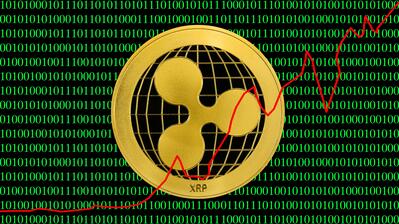Gold and Stocks Rise in Tandem — It’s Not Inflation or Risk, It’s Liquidity

TradingKey - Since 2025, both gold and equities have continued to hit new all-time highs — a rare phenomenon in financial history. Conventional explanations such as dollar depreciation, inflation hedging, and safe-haven demand struggle to explain this simultaneous rally. The true force behind the dual bull market? Liquidity.
As of October 21, gold trades around $4,300 per ounce, up over 62% year-to-date; the S&P 500 is up approximately 15% in the same period.
Ruchir Sharma, Chairman of Rockefeller International, noted that global financial markets are witnessing a strange convergence: gold appears to be reliving its 1979 euphoria, while stocks echo the dot-com boom of 1999. Yet the backdrops are vastly different — one marked by hyperinflation and geopolitical turmoil, the other by tech mania and relative calm.
For investors, the coexistence of bullish sentiment toward AI-driven equities and strong appetite for traditional safe-haven gold is puzzling. If hedging were the goal, put options on stocks would be a cheaper alternative than buying gold.
Why Traditional Theories Fall Short
Over recent months, markets have attributed gold’s rise to fed rate cuts, erosion of Fed independence, geopolitical tensions and central bank purchases.
But Sharma argues liquidity is the core driver — particularly the massive amount of money injected during and after the pandemic, which continues to circulate through the financial system, lifting multiple asset classes.
In fact, three conventional narratives fail to explain the joint rally:
1. Safe-Haven Demand
Investors are buying gold due to policy uncertainty while staying optimistic about AI-driven U.S. stocks — a form of cognitive dissonance.
2. Dollar Weakness
While long-term dollar depreciation can justify higher gold prices, it fails to explain gold’s exceptional strength in recent months, as the dollar has been largely flat.
3. Inflation Hedge
If inflation fears were driving gold, long-term bond yields and TIPS (Treasury Inflation-Protected Securities) should reflect rising inflation expectations. Instead, bond markets suggest long-term inflation expectations remain below 2.5%.
Liquidity: The Real Engine
The liquidity argument holds stronger ground. Although the Federal Reserve maintains that monetary policy remains restrictive, nominal interest rates are still below nominal GDP growth — signaling that financial conditions remain loose.
With governments and central banks perceived as backstops against major market declines, investor risk appetite has surged.
This creates an environment where investors believe: downside is protected, upside is unlimited. This mindset further opens the floodgates of liquidity.
Additionally, the rise of zero-commission trading apps and new investment platforms has made it easier than ever for capital to flow into assets like stocks and gold.
A telling sign: the center of gold demand has shifted from central bank purchases to a surge in ETF inflows — indicating broader retail and institutional participation fueled by accessible investment tools.







